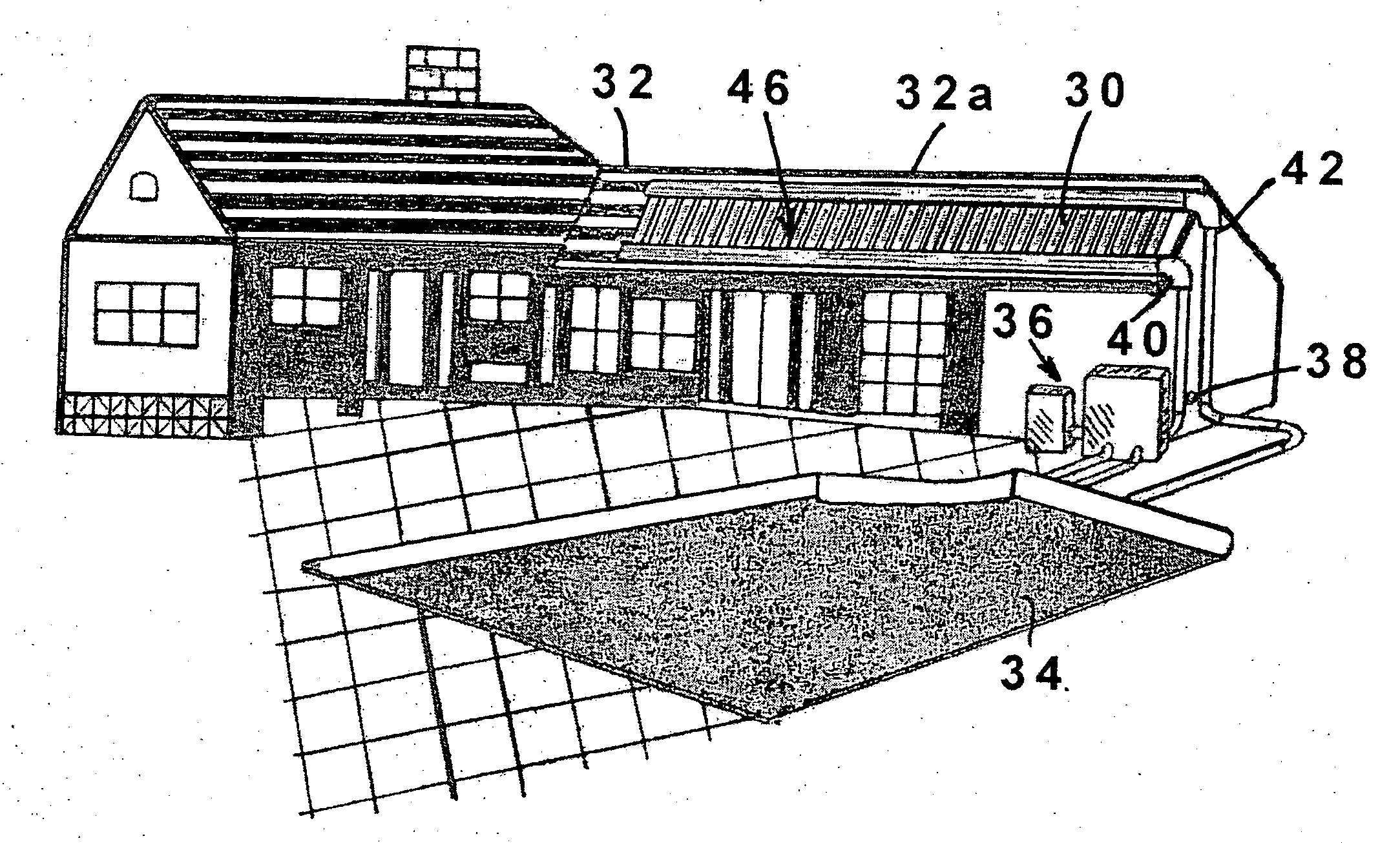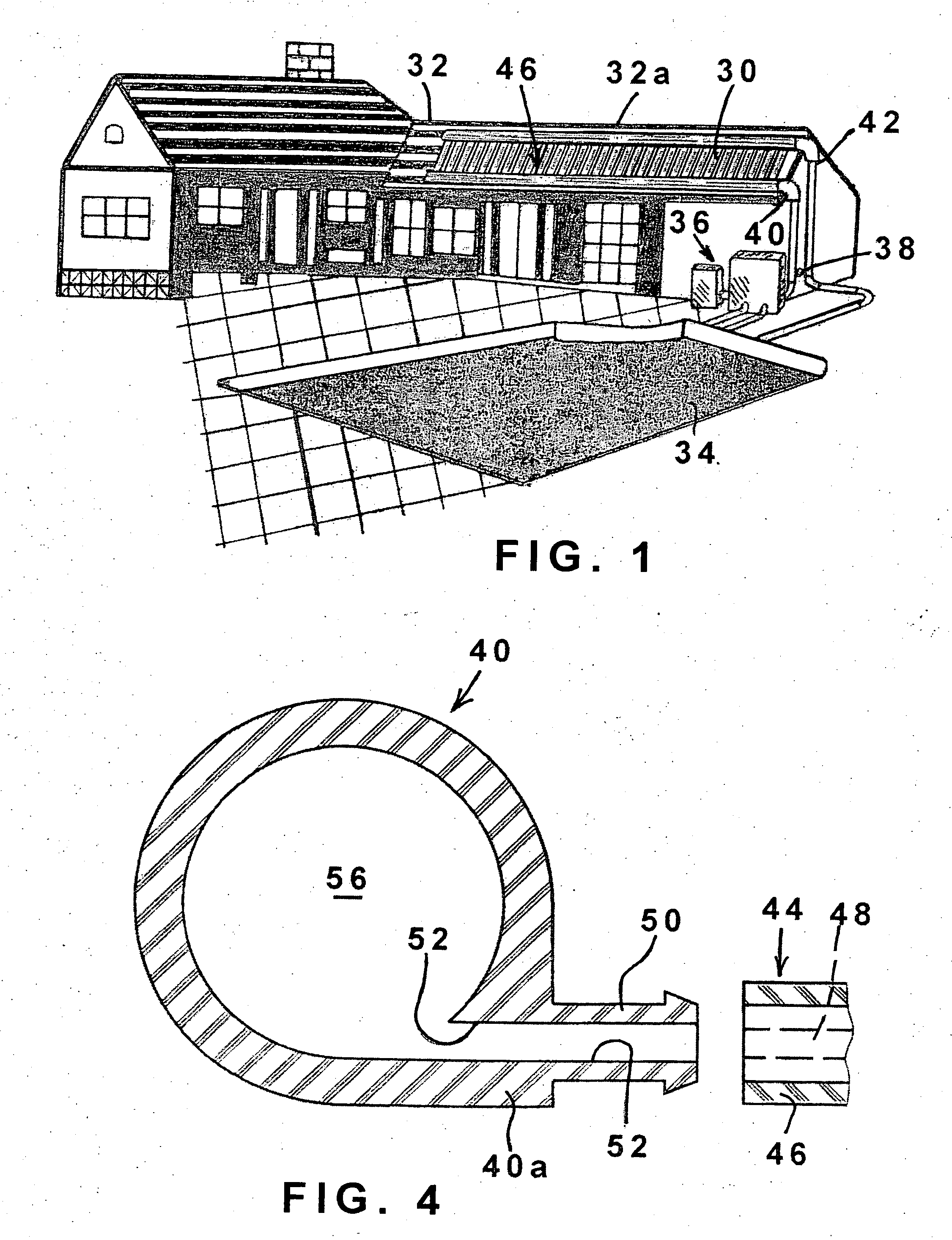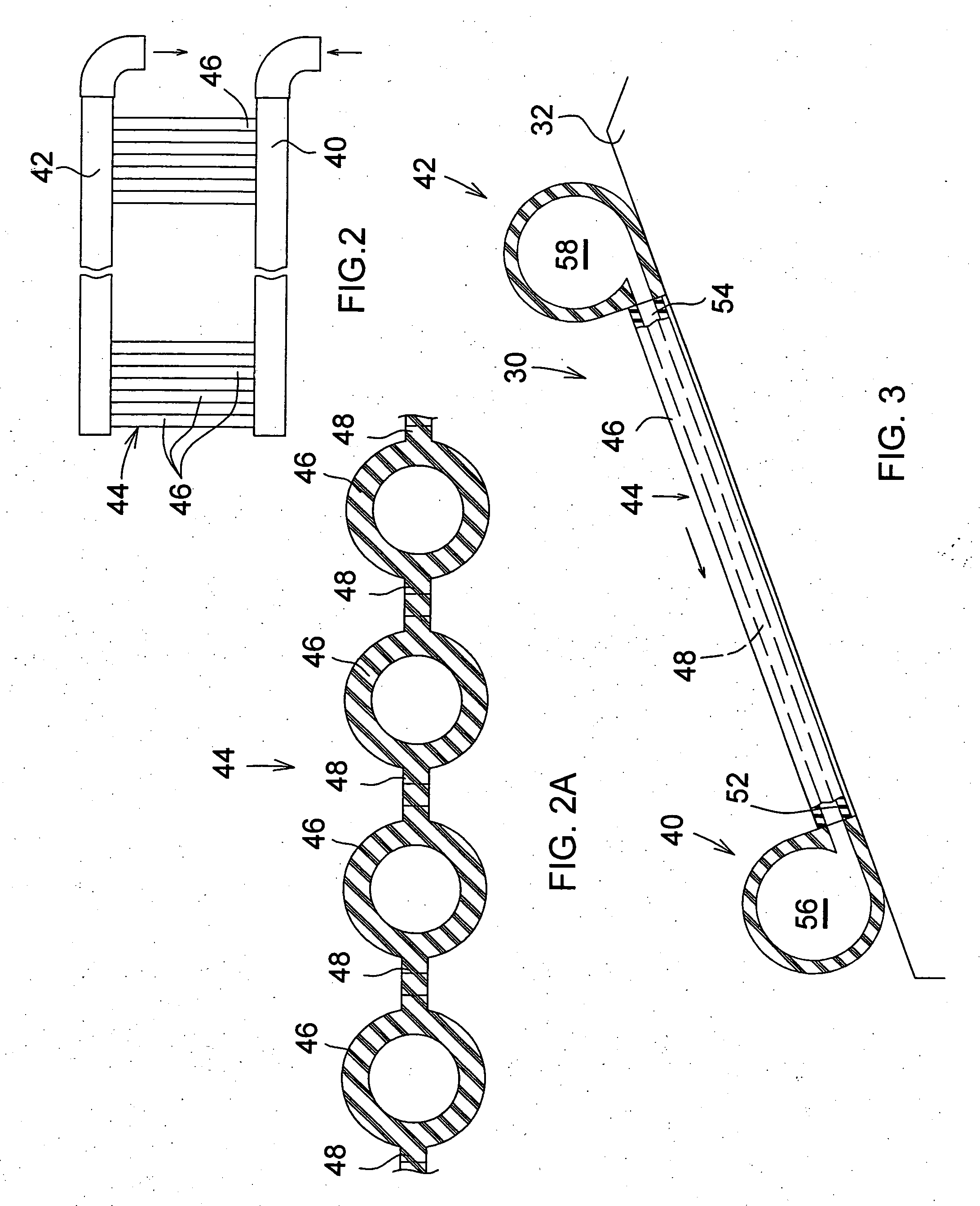Low pressure water-heating solar panel apparatus and method
a solar panel and low-pressure technology, applied in the direction of heat collector mounting/support, light and heating apparatus, other domestic objects, etc., can solve the problems of ineffective efforts with conventional solar panel designs, high labor intensity of mat-type solar panels, and serious disadvantages in construction. achieve the effect of inventive solar panels
- Summary
- Abstract
- Description
- Claims
- Application Information
AI Technical Summary
Benefits of technology
Problems solved by technology
Method used
Image
Examples
first embodiment
[0039]Turning now to FIG. 5, an alternative embodiment of the present inventive solar panel is illustrated. Because the solar panel of FIG. 5 shares many features with the first embodiment illustrated by reference to FIGS. 1-4, features which are the same, or which are analogous in structure or function to those depicted and described above are indicated on FIG. 5 with the same numeral used above, but increased by one-hundred (100). As is seen in FIG. 5, an inventive solar panel 130 includes a pair of spaced apart manifolds 140, 142 (only one of which is seen in FIG. 5—the other end of the solar panel being a mirror image) which are of tubular construction. The manifold tubes are in flow communication with a mat 144 of plural relatively small tubes 146 interconnected by a relatively thin web 148. Again, these manifold tubes 140, 142 outwardly are preferably not fully round, and each includes an outwardly extending elongate boss 140a, 142a (again, only one of which is seen in FIG. 5)...
second embodiment
[0040]Again, it is seen that with this second embodiment of the present inventive solar panel, because of the tangential arrangement of the collector tubes 146 to the manifold tubes 140 / 142 the solar panel cannot harbor a trapped puddle of water which is not drained from the solar panel. This is the case because of the tangential entry of the passages 152 / 154 to the manifold passages 156 / 158.
[0041]Turning to FIG. 6, a third alternative embodiment of the present inventive solar panel is illustrated. Because the solar panel of FIG. 6 also shares many features with the first embodiment illustrated by reference to FIGS. 1-4, and with the second embodiment illustrated in FIG. 5, features which are the same, or which are analogous in structure or function, to those indicated in an earlier embodiment are referenced on FIG. 6 with the same numeral used above, but increased by one-hundred (200). Viewing now FIG. 6, an inventive solar panel 230 includes a pair of spaced apart manifolds 240, 2...
PUM
| Property | Measurement | Unit |
|---|---|---|
| Pressure | aaaaa | aaaaa |
| Angle | aaaaa | aaaaa |
| Flow rate | aaaaa | aaaaa |
Abstract
Description
Claims
Application Information
 Login to View More
Login to View More - R&D
- Intellectual Property
- Life Sciences
- Materials
- Tech Scout
- Unparalleled Data Quality
- Higher Quality Content
- 60% Fewer Hallucinations
Browse by: Latest US Patents, China's latest patents, Technical Efficacy Thesaurus, Application Domain, Technology Topic, Popular Technical Reports.
© 2025 PatSnap. All rights reserved.Legal|Privacy policy|Modern Slavery Act Transparency Statement|Sitemap|About US| Contact US: help@patsnap.com



